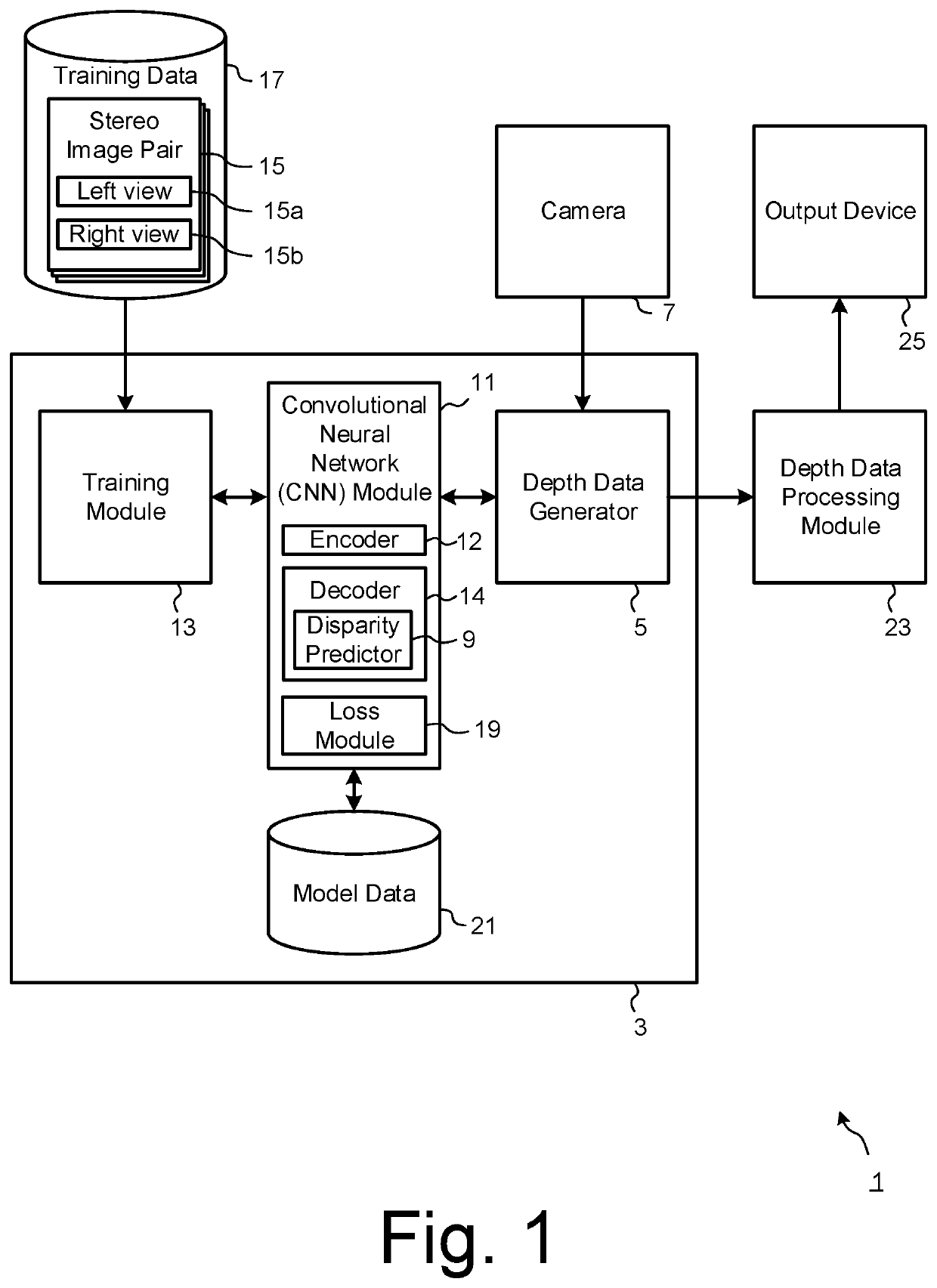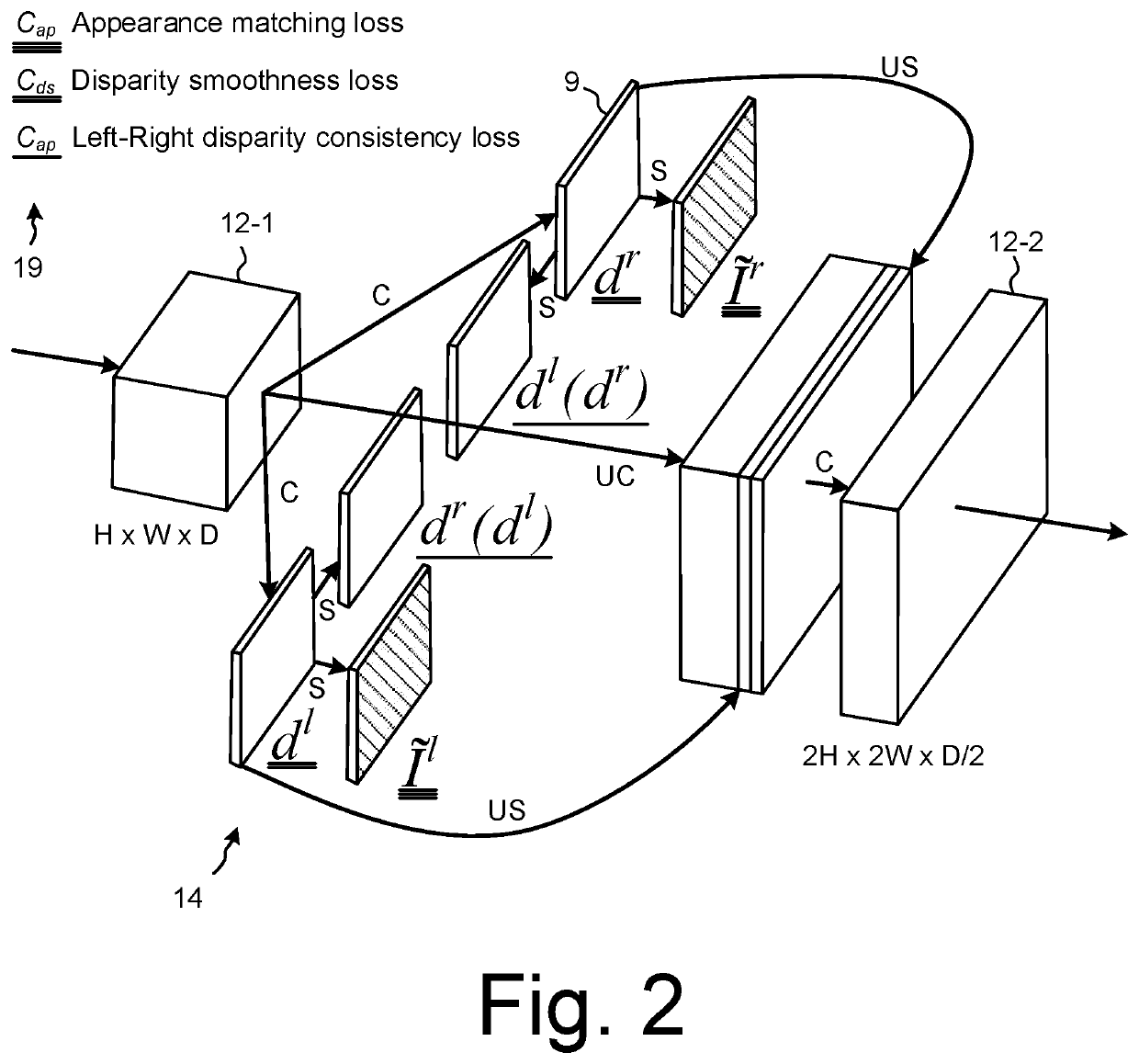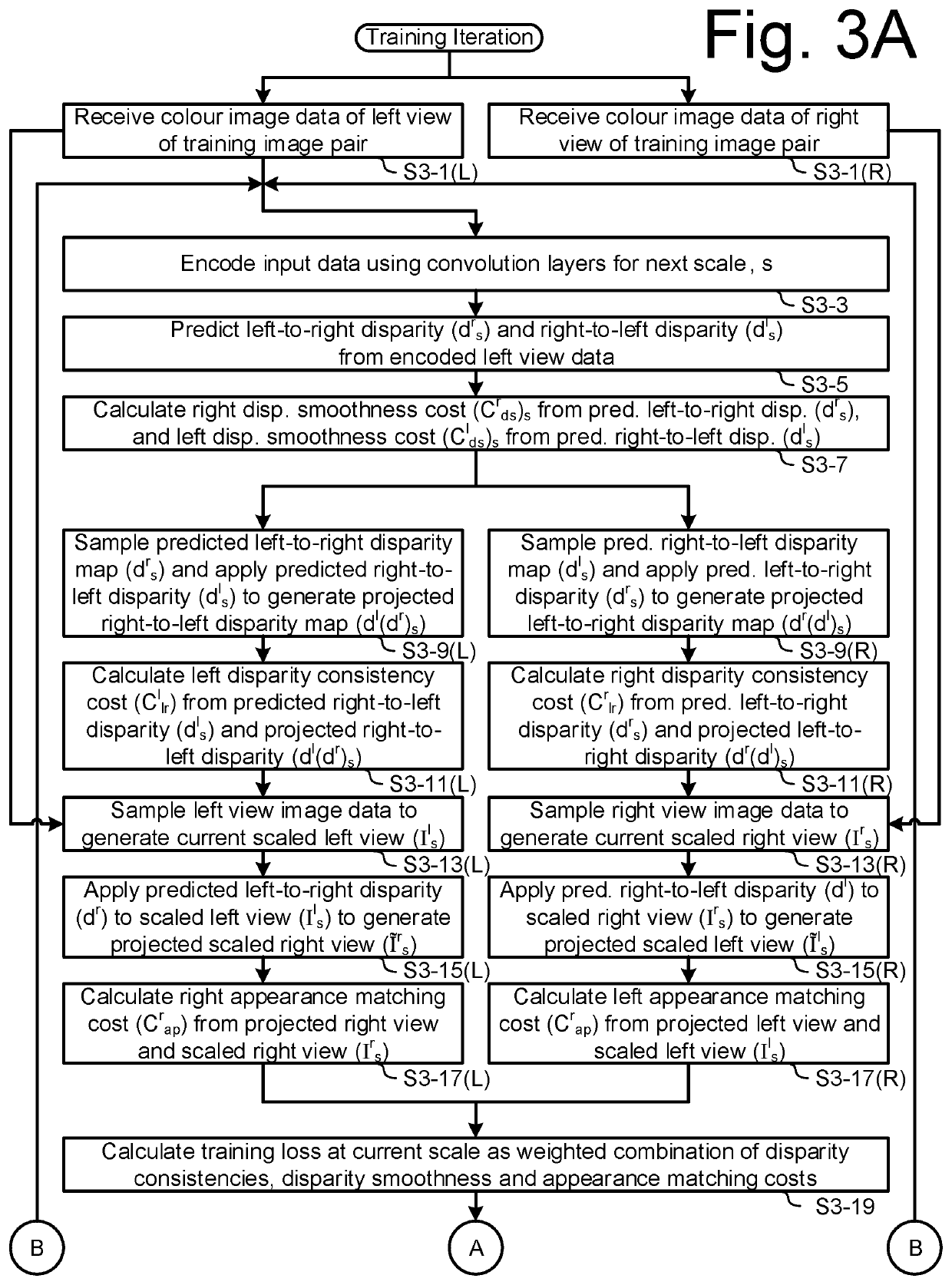Predicting depth from image data using a statistical model
a statistical model and image data technology, applied in the field of image data processing system, can solve the problems of increasing the memory consumption of the algorithm, limiting methods, and inconvenient recording so as to improve the accuracy of binocular stereo data capture and improve the effect of prediction
- Summary
- Abstract
- Description
- Claims
- Application Information
AI Technical Summary
Benefits of technology
Problems solved by technology
Method used
Image
Examples
Embodiment Construction
[0031]FIG. 1 is a block diagram of an example system 1 for predicting and processing depth data from colour image data. As illustrated, the system 1 includes an image processing system 3 having a depth data generator module 5 that may receive colour image data captured from a camera 7, such as an RGB image describing RGB values for pixels forming objects in the captured view. The digital images may be annotated with metadata defining attributes of the respective camera that captured the image. The depth data generator module 5 uses a disparity predictor 9 of a trained convolutional neural network (CNN) module 11 to generate a predicted binocular disparity map directly from the received colour image data of the single source image. The generated binocular disparity values are representative of the difference in image location of a detected object or feature in the captured source image and a predicted image location of the object or feature in a corresponding notional binocular stere...
PUM
 Login to View More
Login to View More Abstract
Description
Claims
Application Information
 Login to View More
Login to View More - R&D
- Intellectual Property
- Life Sciences
- Materials
- Tech Scout
- Unparalleled Data Quality
- Higher Quality Content
- 60% Fewer Hallucinations
Browse by: Latest US Patents, China's latest patents, Technical Efficacy Thesaurus, Application Domain, Technology Topic, Popular Technical Reports.
© 2025 PatSnap. All rights reserved.Legal|Privacy policy|Modern Slavery Act Transparency Statement|Sitemap|About US| Contact US: help@patsnap.com



